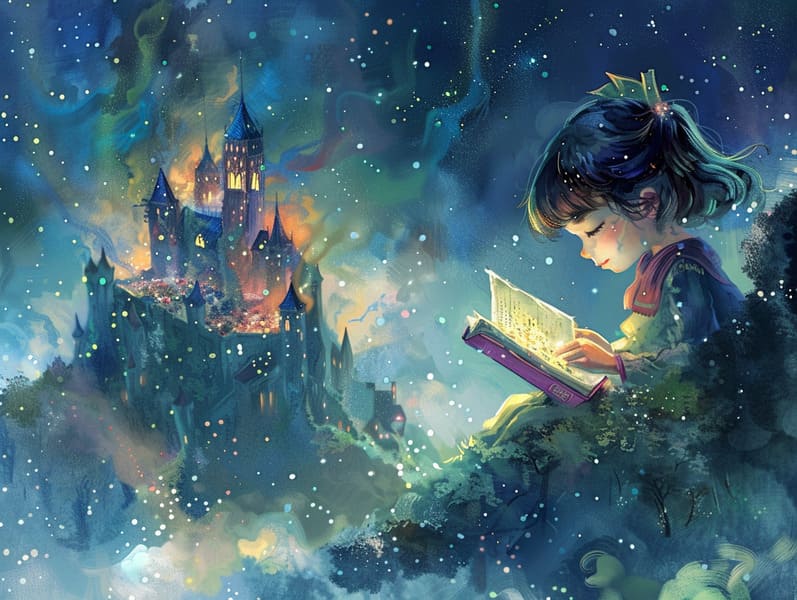
Short fairy tales have enduring presence. These stories have been spoken from one generation to the next long before they were ever published. They arose from a variety of civilizations, including Eastern traditions. They were initially narrated among adults, often carrying themes and messages relevant to the societal norms and beliefs of the time.
The Brothers Grimm, Jacob and Wilhelm, were among the first to collect many of these beloved stories. Their volume, "Grimm's Fables," included classics like "Cinder Maid," "The Story of Hansel and Gretel," and "Schneewittchen," which have since become pillars in the world of famous fairy tales. Similarly, Hans Christian Andersen's enchanting stories, such as "The Sea Maid," and "The Ugly Duckling," have stolen hearts worldwide, securing their place in the pantheon of famous fairy tales.
Despite their age, traditional fairy tales remain as important as ever, especially as kids' bedtime tales. These delightful tales are now available in many formats, including vibrantly illustrated books, charming animations, and digital fairy tales.
Their continued relevance can be connected to several delightful features:
Moral Lessons: Old fairy tales often offer important moral lessons. Stories like "The Boy Who Cried Wolf" teach the value of honesty, while "The Race of the Tortoise and the Hare" demonstrate the virtues of steadfastness and meekness. These stories offer young ones clear distinctions between virtue and vice, forming their moral compass in a tender yet important way.
Sympathy and Perception: Old fairy tales frequently present personalities facing trials and tribulations, prompting listeners to identify with their struggles and applaud their triumphs. For instance, "Beauty and the Beast" teaches us the necessity of seeing beyond the surface to recognize the inner self of a individual, developing perception and awareness.
Cultural Knowledge: Many old fairy tales are infused with the cultural contexts from which they came. Immersing in these stories can provide intriguing perspectives into different heritages, nurturing a sense of global respect and acknowledgment.
Inventiveness and Fantasy: The enchanted elements in timeless fairy tales—talking beasts—provoke children’s visions. These narratives take readers to fantastical realms, boosting imaginative ideas and a sense of wonder that endures a lifetime.
Traditional fairy tales are not only fantastical but also educational. They work as enchanted tools in advancing various cognitive and emotional skills in kids. When fairy tales are spoken out loud, they nurture verbal development by bringing new language and complex sentence structures. This practice also strengthens listening skills and focus, as the young stay focused, eager to see what happens next.
Furthermore, analyzing the themes and characters of timeless fairy tales can cultivate evaluative skills and logical thinking. Kids are guided to notice patterns, make predictions, and realize cause and effect. These talks also ease little ones utter their thoughts and feelings, contributing to their emotional intelligence.
In today’s electronic age, the abundance of web-based fairy tales has made these tales more attainable than ever. Web platforms and online apps present broad selections of Grimm's fairy tales that can be looked at or played anytime, anywhere. Fairy tales narrated are particularly prevalent, making available an interactive method for the young to experience these captivating stories. Read-aloud stories and narrated videos transport characters and settings to life, often joined by whimsical music and instrumentals that raise the tale experience.
The lasting allure of classic fairy tales lies in their ability to change to the present while keeping hold of their core values. Contemporary reimaginings of these fairy tales often show more multicultural characters and modern settings, making them understandable to today’s audience. However, the essential messages of spirit, compassion, and rightness remain unchanged, continuing to impact listeners of all ages.
Fairy tales also offer a sense of familiarity and closeness. They deliver up a orderly narrative with a distinct beginning, middle, and here end, often finishing with the termination of conflicts and the triumph of honesty over deceit. This dependability can be consoling for little ones, rendering a sense of solidity in an inconstant world.
Old fairy tales continue to mesmerize and train new generations, maintaining their fascination and significance in modern society. As children's bedtime stories, they highlight a perfect blend of magic and knowledge, aiding moral values, empathy, and creativity. The proliferation of digital fairy tales and the well-received status of fairy tales voiced guarantee that these timeless tales remain available to new generations.
By continuing and recounting these narratives, we continue to admire the rich tapestry of inventiveness and cultural heritage. Whether you are discovering a artistically illustrated book, browsing a virtual collection, or listening on an audiobook, the splendor of timeless fairy tales is always within reach. These fairy tales remind us of the persistent impact of narratives and its ability to unify us across generations and cultures.
If you are delving into a beautifully illustrated book, experiencing a digital library, or listening via an audiobook, the spell of bedtime fairy tales is always within reach.
These narratives highlight of the continued spell of stories and its ability to draw us together across epochs and places, casting a charm that delights and instructs alike.